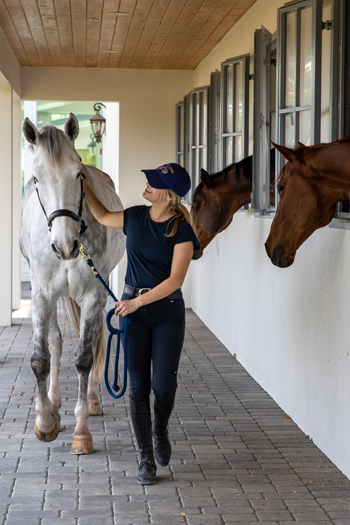
Owning a horse can be expensive. Beyond the initial purchase price, other fees such as board, training, and showing fees can add up. A horse that becomes seriously ill or injured can cost you a fortune in veterinary bills. Should the worst happen and your horse dies, not only will you be emotionally devastated, but you will have lost your financial investment and be without the funds to buy another horse.

Getting Started
To find an equine insurance agency, ask your trainer, veterinarian, or a horse friend to recommend some options or do some research online. Be sure to call a few different companies to see which sounds like the best fit for you. Equine insurance policies are customizable, so the agent will go over each type of coverage available, explain different options, and give you a quote.
Base policies begin with full-mortality insurance, which is essentially life insurance for your horse. This reimburses you the insured value of your horse in the event of death due to any cause, but it also includes theft and has provisions for humane destruction.
Many owners choose to add major medical to their full-mortality base policy, which covers non-routine veterinary expenses up to a specified limit. This can include such costs as diagnostic procedures, surgery, medication, and veterinary exams associated with an illness or injury. It can be useful in a situation where your horse becomes ill and needs to go to a clinic for a few days, or if he becomes lame and requires advanced diagnostics or regenerative care. If you don’t want to purchase a full major medical program, you can choose pared-down medical coverage instead, such as medical assistance, a surgery-only policy, or a colic treatment and surgery option.
It is important to know that policies are reviewed for renewal by the insurance company’s underwriters each year to advise coverage options for the upcoming year. For example, if your horse colics and needs surgery, the policy may not cover colic when it is renewed the following year.

Common Equine Insurance Questions
It’s important to ask your insurance agent questions about the policy ahead of time so that you have a clear understanding of what’s included. Here are a few questions that many owners have when purchasing policies for their horse.
How do you determine insured value?
First, you start with the horse’s purchase price. You can include any sales commissions as well. If you have owned the horse for a while, you may be able to insure it for a value higher than the purchase price. The agency will submit competition records, along with the value you intend to insure for, to the insurance carrier. This information helps the carrier to decide whether or not to approve that proposed value. For young horses, you can also include training fees as justification for the horse’s value.
At what age can you insure a horse?
You can begin insuring a horse at 24 hours of age. The rate to insure a horse from 24 hours of age to 30 days is higher, so if you start that young, you will pay a little bit more. If you wait until the foal is 31 days, it’s less expensive. The rate goes down each year until the horse is two years old, and then he can be insured at the standard rating for his use, like as a hunter or jumper.
A horse can have full mortality and medical coverage through age 20, though the rate for the full mortality increases each year after age 16. Sometimes, a customer will decide to reduce the value, so they’ll keep their premium close to the same, but they can continue to insure and get medical coverage.
How expensive is equine insurance?
Insurance premiums are based on your horse’s age, use, and value of your horse. As mentioned above, as your horse gets older (over 16), the rates go up. However, for ages 2 through 15, most carriers will write the standard rating.
Because you can customize your policy, you may choose to insure your horse for a value less than his current market value. You can come up with an amount that fits into your budget. For example, say your horse is valued at more than $30,000, but when you get the premium quote, you decide you’re more comfortable paying the rate for a value of $25,000. You can still get the major medical add-on, and if he were to die, you can still recoup a good portion of your investment.
Buying a policy for your horse is different than buying any other type of insurance policy because you’re so attached to the animal. It can be an emotional process for you if your horse becomes ill or injured, or worst-case scenario, dies. Being able to have an open and honest dialogue with an experienced agent that you feel comfortable with is an important factor in making sure you have all the answers you need.
Further Reading
Stay in the Know. Click here to Subscribe to Horse Illustrated’s E-newsletter






